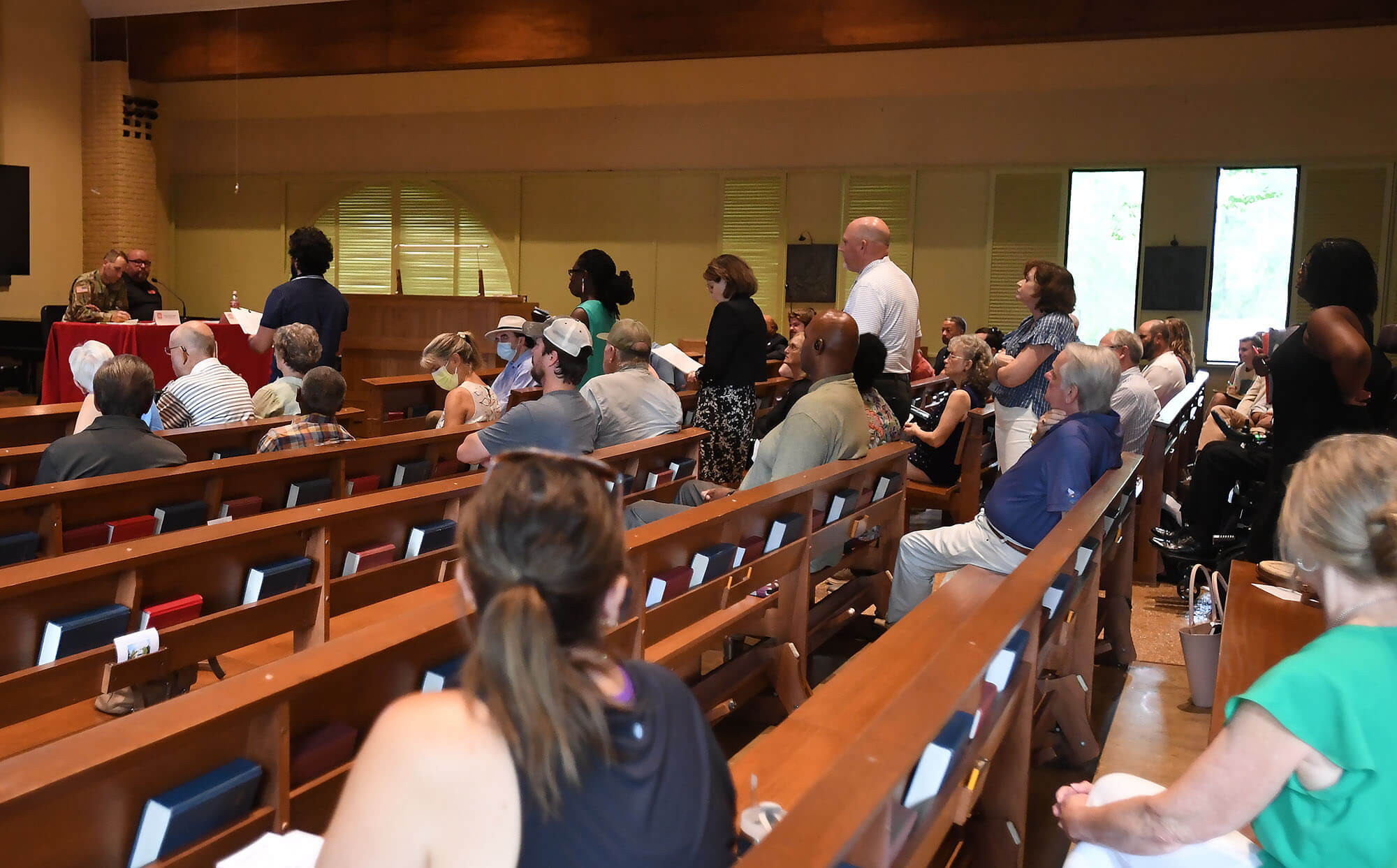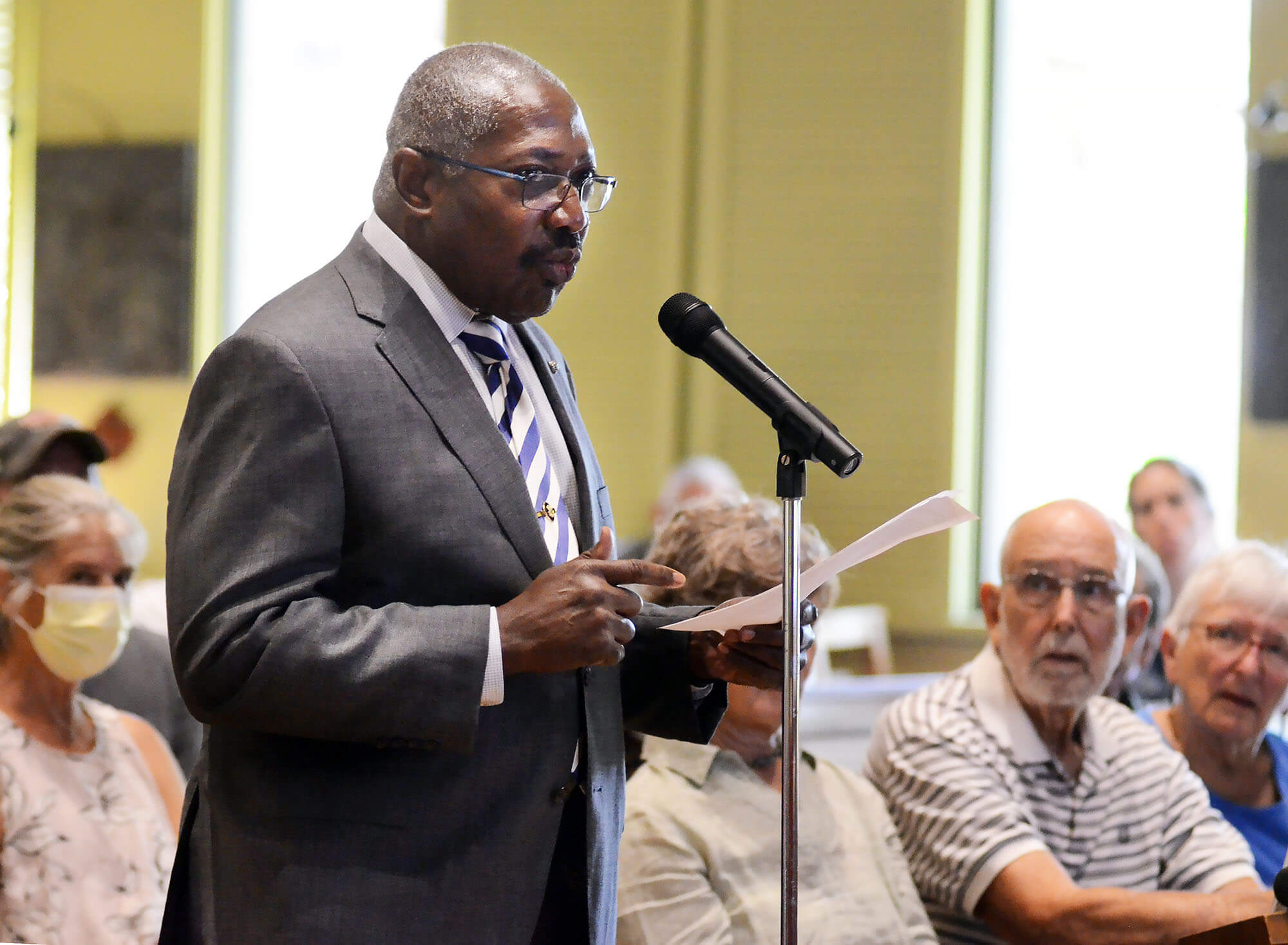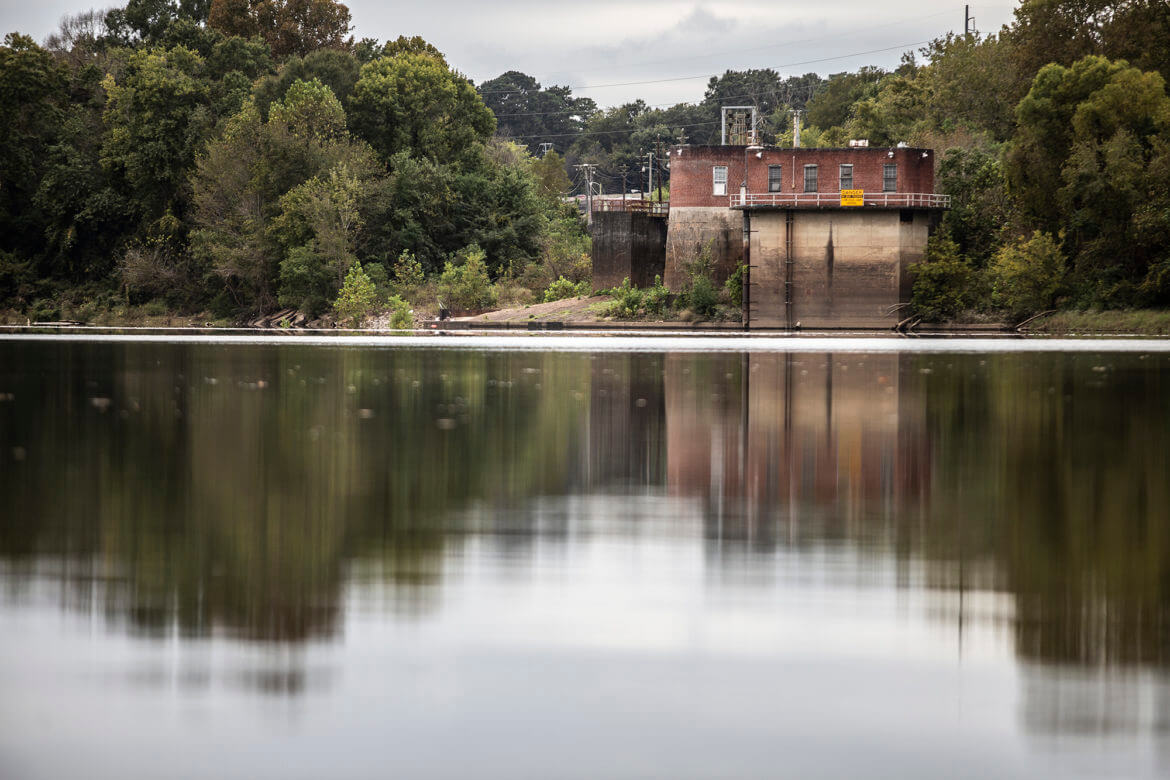

Throughout a fittingly stormy Thursday in Jackson, dozens of residents and public officials again lined up in front of the U.S. Army Corps of Engineers in what has felt like, to some, a never-ending cycle of hundred-page studies and hours-long town halls.
In stereotypically bureaucratic fashion, the Corps’ July draft study for a flood control project on the Pearl River is the latest in a process that’s now lasted roughly 40 years.
At least one resident decided that, whichever proposal the agency moves forward with, if any, they’ve had enough.
“I’m interested in a buyout, I want out,” said Thia Walker, a resident of the Canton Club neighborhood in northeast Jackson, adding her street had flooded that very afternoon. “It’s taken a long time for all these plans and alternatives and it seems like there’s never going to be plan that’s suitable for the masses.
“This will go on and on forever and I’m ready to get out.”

The Corps, in its July publication, narrowed its project selection to two options: “Alternative D1” and “Alternative E1.”
D1 is a scaled back version of the controversial “One Lake” plan that the project’s local sponsor — the Rankin-Hinds Flood Control District, or the levee board — had pushed for years before the Corps decided against the idea. The proposal would dam the Pearl River and lower its banks, allowing water to pool between a stretch starting just north of Lakeland Drive to just below Interstate 20. The project would also include four sets of levees, including one for the Canton Club neighborhood.
Several residents and public officials, including recently elected Mayor John Horhn, gave their support to D1, praising its potential to deliver economic and recreational opportunities to a poor city facing a declining population.
“This flood control project can be the spark that ignites that rebirth in our city,” Horhn said during the afternoon session at St. Philip’s Episcopal Church.

The proposal E1 copies D1 except for including a dam, meaning it wouldn’t include the colloquial “lake” people associate with D1. Not having a dam also makes E1 the cheaper option. The Corps estimates D1 could cost as much as $960 million, versus $788 million for E1.
Some, though, criticized the Corps for already ruling out a third option, “Alternative A1,” which the agency says would only cost up to $22 million. A1, which is the only one of the three that wouldn’t alter the river or its banks, would include elevating and floodproofing structures as well as offering buyouts. But compared to the other two plans, the agency limits the scope of A1, including just one levee and only offering elevation and buyouts for certain structures.
“Once more, we urge the Corps to expand A1 because it doesn’t go far enough,” said Jill Mastrototaro of Audubon Delta.
The benefits in that option, the Corps says, is limited by how many property owners choose to participate. But Mastrototaro and others argued that A1 could produce more benefits if the agency simply expands its scope. The agency’s study shows that of the three proposals, A1 is the only one with positive net benefits.

Credit: Eric J. Shelton, Mississippi Today/ Report for America
Tributaries and drainage in Jackson
While Thursday’s conversation focused on the river itself, several residents brought up more immediate causes of flooding, such as clogged creeks and storm water drains.
“I live in (the McLeod neighborhood), and I know personally that our storm drains are failing,” said Greta Mack Harris. “I’m nervous to go home after I leave here. Our clogged and collapsing culverts cause flooding and damage our foundation, walls and plumbing.”
Others pointed to tributary flooding as more regular issue than Pearl River flooding. While the Corps’ study doesn’t address the river’s tributaries in Jackson, it does mention other ongoing efforts.
The Mississippi Soil and Water Conservation Commission has three projects in the design phase, using U.S. Department of Agriculture funding, to reduce flooding along Hanging Moss Creek, Lynch Creek and Lake Ridgelea in Byram. The construction for those, however, isn’t set to begin until December 2028. The city of Jackson is also in the design phase of a flood reduction project along Eubanks Creek.
Downstream impacts
While the Corps maintains that neither D1 nor E1 would affect the river’s flow once it reaches Monticello, residents in Louisiana, where the Pearl River reaches downstream, are unconvinced. Brandon Davis, environmental planning chief for the agency’s Vicksburg district, admitted at a meeting in Slidell, Louisiana, on Wednesday that the Corps didn’t have the authority nor funding to fully study what would happen to the river south of Jackson, NOLA.com reported.

Davis clarified to Mississippi Today that other rivers impact the Pearl River once it reaches those places.
“Those areas down in Monticello, Slidell have their own issues with bank caving and erosion,” he said. “But it’s not necessarily tied to what’s going on up here. You have the Strong River, Copiah Creek, other tributaries that are causing most of the issues you’re seeing there.”
The study notes that D1 and E1 would “likely adversely affect” several endangered or threatened species along the Pearl River, including three different types of turtles. D1, the Corps wrote, would impact a wider range of species, including the Gulf sturgeon, than E1.
When asked what that impact could look like, Davis said those habitats included anywhere the project may “temporarily” affect. But as far as how affected the habitats would be, he said only that they wouldn’t be “completely eradicated.”
Comment period and next steps
The public comment period is still ongoing and ends Aug. 18. The Corps encourages the public to visit its project website to see how to submit feedback.
Vicksburg District commander Col. Jeremiah Gipson said the process is on schedule to send a final study and recommendation to the assistant secretary of the Army for Civil Works by the end of 2025. Some residents asked the Corps to extend the ongoing comment period, which Gipson said would be his decision.
- Trump argues presidential authority allows him to do a lot, but not fund SNAP - November 9, 2025
- Mississippi is among the states where people are waiting for SNAP food aid for November - November 8, 2025
- A tool tracking billion-dollar disasters is active again after being retired by Trump administration - November 8, 2025